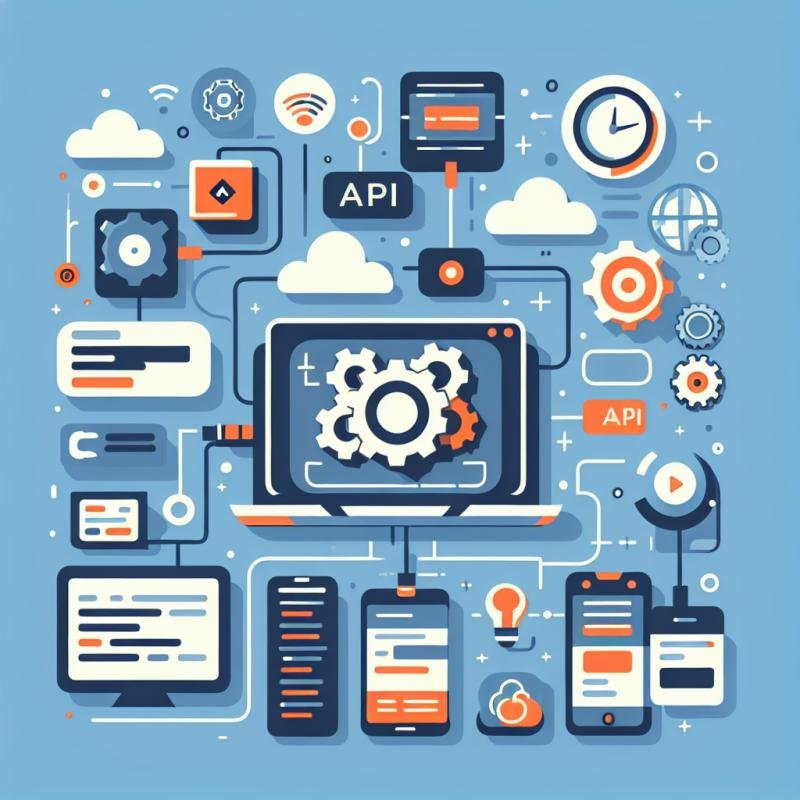Creating a robust API for your Laravel application is essential for building scalable and maintainable web services. However, many developers struggle with structuring their APIs efficiently while ensuring security and performance. This guide will walk you through the step-by-step process of building a powerful API in Laravel that meets modern standards and best practices.
Whether you're a seasoned Laravel developer or just starting, this tutorial offers actionable insights and real-world examples to help you deliver a professional API that integrates seamlessly with frontend or mobile apps.
1. Setting Up Your Laravel Project for API Development
Start by installing a fresh Laravel project or using your existing application. Laravel’s built-in tools make API development straightforward. Run:
composer create-project --prefer-dist laravel/laravel laravel-apiNext, configure your database connection in the .env file. Laravel supports multiple databases, so choose the one that fits your needs.
For building APIs, it’s a good idea to disable session state, CSRF tokens, and views for your API routes to optimize performance and security. Laravel allows you to group routes under the api middleware by default, which disables session state and CSRF protection.
If you’re deciding whether Laravel is the best framework for your project compared to other platforms like WordPress, our article Laravel vs WordPress: A Detailed Analysis to Help You Decide the Best Fit for Your Business provides an in-depth look at the strengths of Laravel for API-centric applications.
✓ Quick project setup
✓ Database configuration
✓ API middleware ready out of the box
2. Defining API Routes
Laravel’s routing system is flexible and expressive. For APIs, place your routes in routes/api.php. Here’s an example of defining RESTful routes for a resource:
Route::apiResource('posts', PostController::class);This single line creates routes for index, show, store, update, and destroy actions following REST conventions.
Use route grouping to add middleware such as authentication or rate limiting:
Route::middleware('auth:sanctum')->group(function () {
Route::apiResource('posts', PostController::class);
});Grouping routes enhances maintainability and secures endpoints consistently.
3. Creating Controllers for API Logic
Controllers handle the business logic for your API endpoints. Use the --api flag to generate controllers without create/edit views:
php artisan make:controller PostController --apiExample: Implementing the index method to return all posts in JSON format:
public function index()
{
$posts = Post::all();
return response()->json(['data' => $posts], 200);
}Use Eloquent models for database interaction and Laravel’s response() helper to format JSON responses.
4. Securing Your API with Authentication
Security is paramount when exposing APIs. Laravel Sanctum is a simple package to add token-based authentication:
composer require laravel/sanctum
php artisan vendor:publish --provider="Laravel\Sanctum\SanctumServiceProvider"
php artisan migrateAdd Sanctum’s middleware to your api middleware group in app/Http/Kernel.php:
'api' => [
\Laravel\Sanctum\Http\Middleware\EnsureFrontendRequestsAreStateful::class,
'throttle:api',
\Illuminate\Routing\Middleware\SubstituteBindings::class,
],Users can generate API tokens, which must be sent via the Authorization header with each request.
This setup ensures only authenticated clients access protected routes, preventing unauthorized data access.
5. Request Validation for Data Integrity
Validating incoming data protects your API from malformed or malicious input. In controllers, use Laravel’s validate() method:
public function store(Request $request)
{
$validated = $request->validate([
'title' => 'required|string|max:255',
'content' => 'required|string',
]);
$post = Post::create($validated);
return response()->json(['data' => $post], 201);
}Alternatively, create dedicated Form Request classes for cleaner code and reusability.
6. Formatting API Responses Consistently
Consistent API responses improve client integration. Use standard HTTP status codes and wrap data in a consistent structure:
return response()->json([
'success' => true,
'data' => $resource,
'message' => 'Resource fetched successfully'
], 200);Consider using Laravel’s Resource classes for advanced response formatting and relationships.
7. Testing Your API Endpoints
Automated testing ensures your API works reliably. Laravel offers powerful testing capabilities with PHPUnit and HTTP testing helpers:
public function test_can_fetch_posts()
{
$response = $this->getJson('/api/posts');
$response->assertStatus(200)
->assertJsonStructure(['data']);
}Write tests for authentication, validation, and edge cases to catch bugs early.
8. Best Practices for Building Laravel APIs
- ✓ Use API versioning to manage breaking changes gracefully.
- ✓ Implement rate limiting to protect from abuse.
- ✓ Document your API using tools like Swagger or Laravel API documentation generators.
- ✓ Log API requests and errors for monitoring and debugging.
- ✓ Secure sensitive information and follow OWASP API security guidelines.
For additional insights into managing your project flexibly and cost-effectively, especially if you’re considering external help, our article Top 5 Reasons to Choose a Freelancer for Your Website Project: Flexibility, Expertise, and Cost-effectiveness explains how freelancers can accelerate your API development with specialized skills.
Conclusion
Building a robust API for your Laravel application is a strategic investment that unlocks powerful integrations and scalability. By following the step-by-step process outlined—setting up your project, defining routes, securing with authentication, validating requests, formatting responses, and testing thoroughly—you can deliver a professional API that meets modern standards.
Remember to adopt best practices like versioning and documentation to keep your API maintainable and user-friendly. With Laravel’s elegant syntax and tools, creating efficient APIs is within reach for developers at any level.
Frequently Asked Questions
1. Why choose Laravel for API development?
Laravel offers built-in support for API middleware, authentication packages like Sanctum, and expressive routing, making API development streamlined and secure.
2. How do I secure my Laravel API?
Use Laravel Sanctum or Passport for token-based authentication, apply middleware to protect routes, and implement rate limiting to prevent abuse.
3. Can I version my API in Laravel?
Yes, you can version APIs by grouping routes under prefixes like api/v1 and maintaining separate controllers for different versions.
4. What tools help with API documentation?
Swagger, Postman, and Laravel packages like l5-swagger help generate interactive API documentation.
5. How important is testing for APIs?
Testing is critical to ensure your API endpoints behave as expected and to prevent regressions during future updates.







